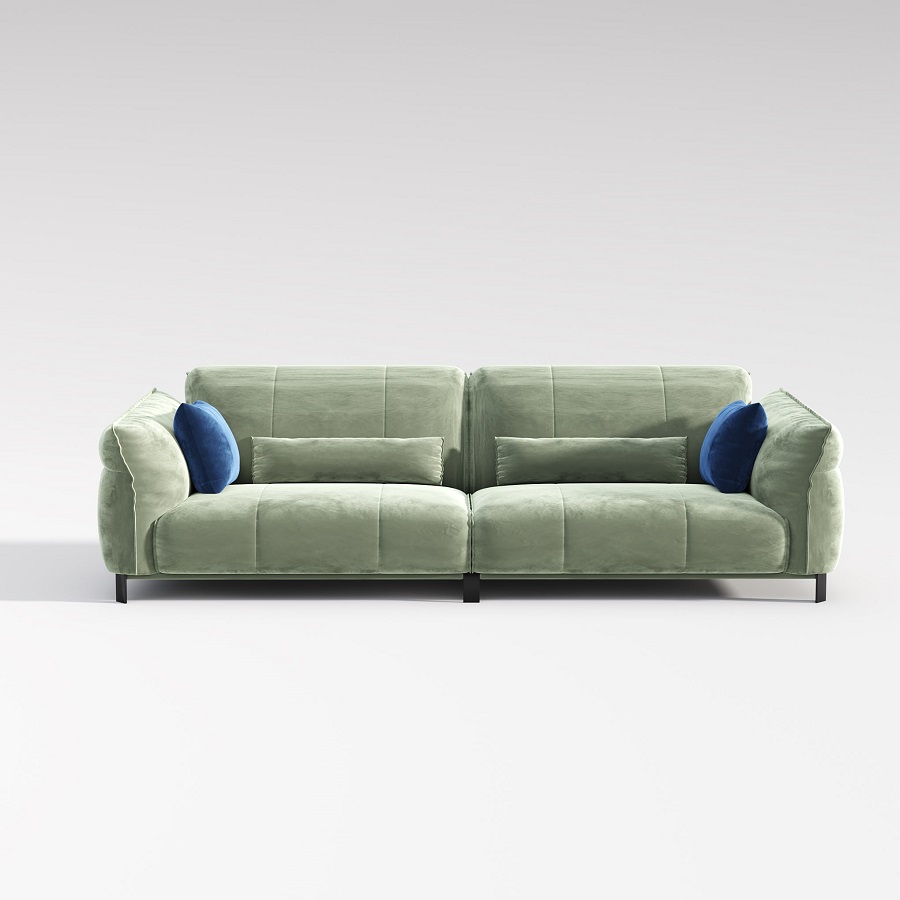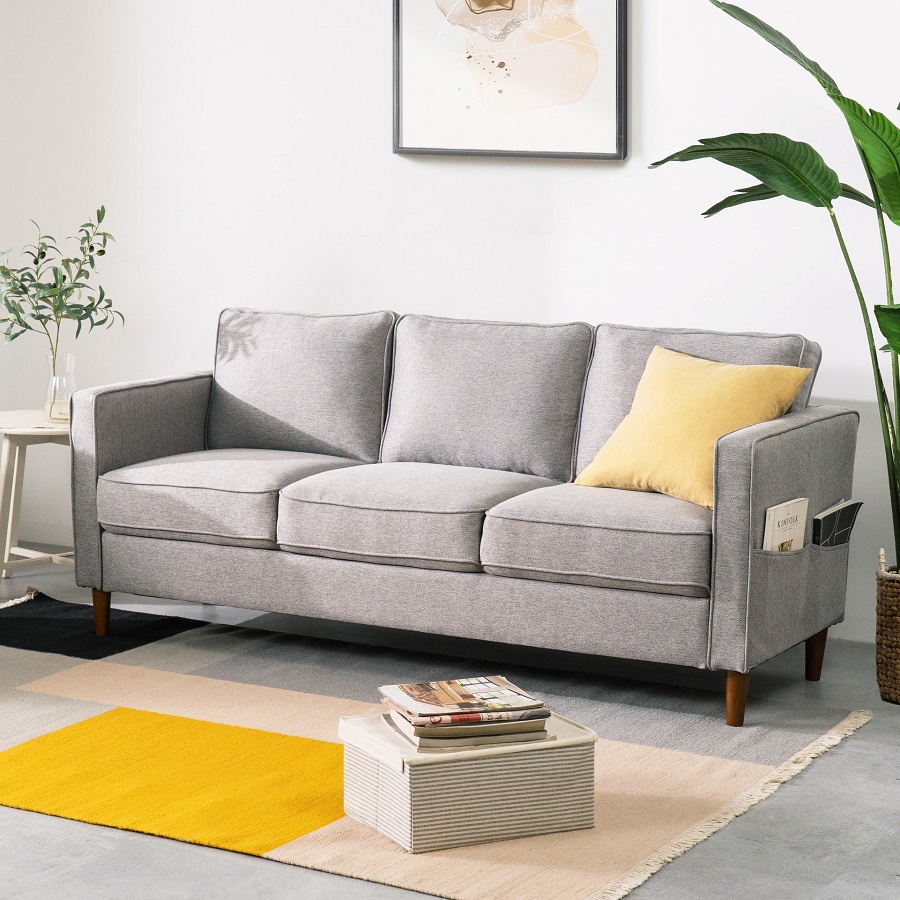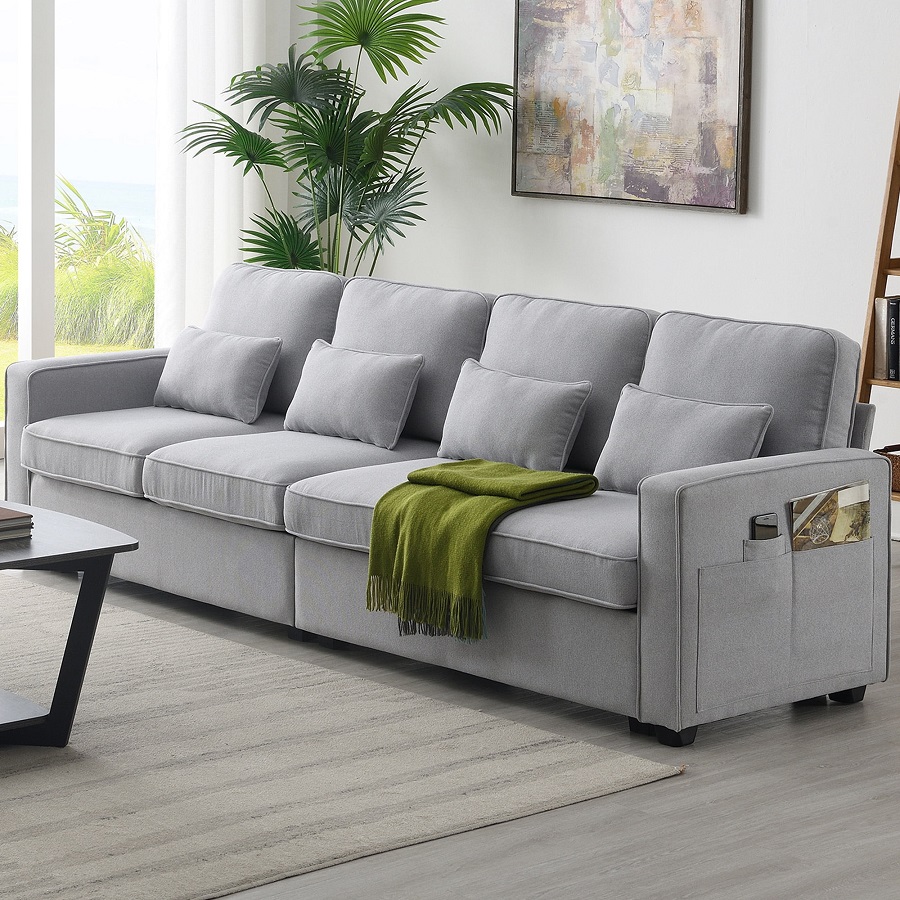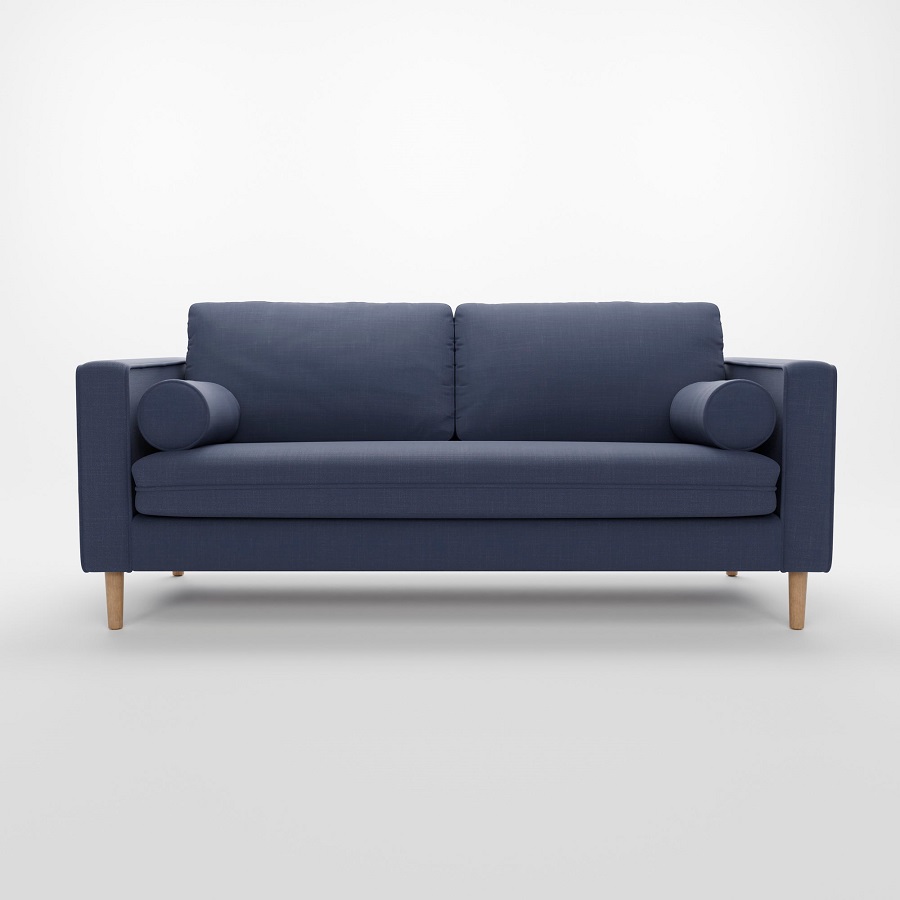Identify Your Sofa Fabric and Cleaning Codes
Before starting your DIY couch cleaning Fabric Sofa, it’s essential to know your sofa’s fabric type and cleaning codes. This will determine the best cleaning methods and products to use.
Check Manufacturer’s Label for Cleaning Codes
Find your sofa’s tag and look for the cleaning code, which tells you what cleaning products are safe for your fabric. These codes typically are ‘W’ for water-based cleaners, ‘S’ for solvent cleaners, ‘WS’ for either, and ‘X’ for vacuum only.
Determine Sofa Fabric Types
Understand whether your sofa is made from natural fibers like cotton or synthetics like microfiber. Each type has specific care requirements.
By identifying the cleaning codes and fabric types, you ensure that you clean your fabric sofa effectively without causing damage.

Pre-Cleaning Preparations: Vacuum and Brush
Before diving into the cleaning process, preparing your fabric sofa is key. Start with these essential steps:
- Vacuum Thoroughly: Use your vacuum’s upholstery attachment to remove crumbs, dust, and pet hair from all sofa surfaces.
- Target The Crevices: Ensure you vacuum the crevices and under the cushions, where debris tends to accumulate.
- Brush Off Dirt: Gently brush the fabric with a soft-bristled brush to loosen any embedded dirt, paying special attention to high-traffic areas.
By doing this pre-cleaning, you pave the way for an effective spot cleaning session.
Spot Cleaning: Techniques and Solutions
When faced with a spill or stain on your fabric sofa, quick action is crucial. Start by blotting up any excess liquid with a clean, absorbent towel. Avoid rubbing the stain, as this can push it deeper into the fabric.
Blot, Don’t Rub
- Immediately blot spills with a clean cloth.
- Do not rub; it can worsen the stain.
Cleaning Solutions for Different Stains
- Use a water-based solution for ‘W’ coded fabrics.
- Apply solvent-based products for ‘S’ coded materials.
- Test any cleaner on a small, hidden spot first.
DIY Cleaning Mixtures
- Mix equal parts water and white vinegar for a homemade cleaner.
- Combine water, baking soda, and liquid soap for another option.
Tackling Grease and Oil Stains
- Sprinkle baking soda on the stain and let it sit before vacuuming.
Dealing with Non-Liquid Stains
- Gently scrape away solids with a dull edge, then vacuum.
- Use a mild soap solution to treat the area.
By using these spot cleaning techniques and solutions, you can tackle most stains on your fabric sofa effectively.

Natural Cleaning Methods: Baking Soda and Vinegar
For an eco-friendly cleaning option, try baking soda and vinegar. These household staples are excellent for refreshing and deodorizing fabric sofas.
Baking Soda for Deodorizing
- Sprinkle baking soda across the sofa’s surfaces.
- Let it sit for 15 to 20 minutes to absorb odors.
- Vacuum it up with the brush attachment to remove residue.
This method is especially good for removing smells that linger on your couch.
For a deeper clean, make a paste with baking soda and water. Apply it to stains and wait for it to dry before vacuuming. Be light with the paste and test a small area first.
Vinegar Solution for Spot Cleaning
- Mix equal parts of water and white vinegar in a bowl.
- Use a clean cloth to dab the solution onto stains.
- Do not soak the fabric.
- Blot gently until the stain lifts.
- Rinse with a cloth dampened with water and blot dry.
From coffee spills to pet stains, this mixture can work wonders. Apply it sparingly to avoid watermarks.
Always test these natural cleaners in a discreet area first. Use them as part of your regular cleaning routine for maintenance.
Using Commercial Upholstery Cleaners
When DIY methods are not enough, turn to commercial upholstery cleaners. Here’s how to do it safely:
- Check the Label: Always read the cleaner’s instructions before applying. It’s crucial for your sofa’s safety.
- Spot Test: Try the cleaner on a small, hidden area first. This avoids larger issues later.
- Follow Directions: Use the product as directed for the best results. Each cleaner is different.
- Apply Sparingly: Use only a small amount. Too much product can harm your sofa.
- Blot Gently: After applying the cleaner, blot the area carefully with a clean cloth.
- Rinse if Needed: Some cleaners may need rinsing. If so, use a damp cloth, then blot dry.
- Dry Fully: Let your sofa dry completely. Ventilate the room well or use a fan.
Commercial cleaners can tackle tough stains and offer a deeper clean than some DIY methods. Remember to pick a cleaner that is compatible with your sofa fabric and always adhere to safety guidelines.
Addressing Pet Hair and Odors
Dealing with pet hair and odors on fabric sofas requires specific steps. Here is a practical guide to help you keep your sofa clean and fresh.
Remove Pet Hair Effectively
- Vacuum Regularly: Use a vacuum cleaner with an upholstery attachment to suck up pet hair.
- Use a Lint Roller: Roll a lint roller over the sofa to catch any remaining hair.
- Try Rubber Gloves: Damp rubber gloves can help lift pet hair from the fabric.
Neutralize Pet Odors
- Baking Soda: Sprinkle baking soda on the sofa, let it sit, and then vacuum.
- Vinegar and Water: Spray a mix of vinegar and water onto the sofa and let it air dry.
- Enzyme Cleaners: These can break down pet odor molecules and are great for deep cleaning.
Keep Pets Off the Sofa
- Pet Beds: Provide a cozy bed for your pets to use instead of the sofa.
- Covers and Throws: Use easily washable covers to protect the sofa from hair and odors.
By adopting these methods, your fabric sofa can stay clean and welcoming for everyone.
Preventative Measures for Fabric Sofa Maintenance
To keep your fabric sofa looking new, consistency in maintenance is key. Consider these steps to protect your sofa:
- Utilize Sofa Covers: Invest in quality sofa covers or throws. They shield fabric from spills and stains.
- Implement a ‘No Food’ Policy: Reduce the risk of stains by keeping food away from the sofa.
- Clean Regularly: Vacuum weekly to remove dust and debris. Wipe with a damp cloth if needed.
- Avoid Direct Sunlight: Position your sofa away from sunlight to prevent fabric fading.
- Reapply Fabric Protector: Use a fabric protector spray every few months, after a deep clean.
- Rotate Cushions: Switch around your sofa cushions to ensure even wear and longevity.
- Be Proactive with Spills: Clean spills immediately to prevent stains from setting in.
- Enforce Pet Rules: Train pets to not jump on the sofa, or provide them with their own space.
Incorporate these measures into your routine and your sofa will maintain its comfort and appearance for years.
Professional Cleaning versus DIY Methods
When deciding how to clean a cloth sofa, remember that both professional cleaning services and DIY methods have their place. Choosing the right approach depends on the sofa’s condition and the type of stain or dirt present.
Benefits of Professional Cleaning Services
- Professionals use commercial-grade equipment, ensuring a deep clean.
- Experts have knowledge of different fabric types and the best cleaning techniques.
- Saves time and effort, especially for large or heavily soiled sofas.
- They often offer guarantees on their cleaning services.
When to Choose DIY Methods
- For minor stains and maintenance, DIY approaches work well.
- It can be cost-effective, using household products like baking soda and vinegar.
- Allows immediate action, which is crucial for preventing stain setting.
- DIY cleaning is an eco-friendly option, avoiding harsh chemicals.
In summary, professional cleaning services provide a thorough clean with less hassle, but can be costly. DIY methods are cheaper and more immediate, but may not always achieve professional-level results. Balance your choice based on the sofa’s needs, personal preferences, and budget.


